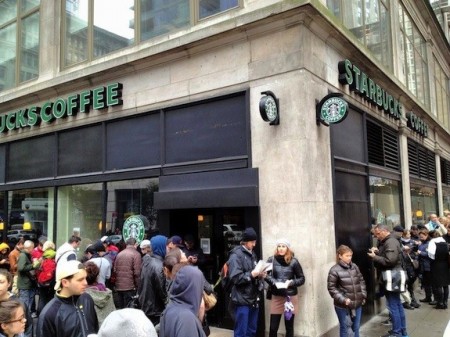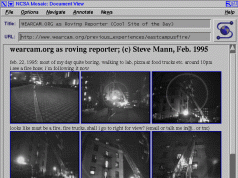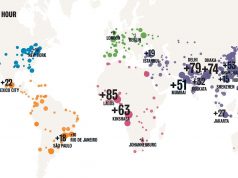Jane’s Carousel, Brooklyn—Image by andjelicaaa, Instagram
New York City collided with the future this week because of a storm scientists say is an early manifestation of global warming.
It is not only scientists looking at the future and seeing an uncertain world. The ultra conservative insurance industry is applying their actuarial models to the increased claims caused by melting ice caps, drought, famine, etc… Rebuilding lower Manhattan costs money. Reinsurers decided that someone will have to pay for the additional risk. Guess who that someone is.
You. Well, all of you. Or is that all of us?

Unconnected New Yorkers—Image Now This News
One way or another we as a society will have to pay for the destabilizing effects of climate change. New York’s experience illustrates that even connected, modern cities can go dark. One example is found in this image from Tuesday showing New Yorkers skiving WiFi from a Starbucks like so many swamp leaches on a blood-filled leg. Even the well-capitalized, digital darling Huffington Post was knocked offline by the storm.
Money doesn’t always buy stability—even in the world’s most powerful, wired city.
What can smart cities do to manage the risk of an uncertain future to ensure market stability?
The first step is to finally agree that change is upon us whether anthropogenically driven or not. The second step is to gather the data associated with managing a growing urban population in sustainable, livable environments. The third step is to make that data accessible so deep problems can be turned into shallow ones through the power of crowd sourcing.
Finally, the fourth step is to distribute their solutions in order to apply them to the global problems at hand.
If we come together as a civil society embracing the challenges of a common cause, we can learn to live with nature. That will cost some money, but one way or another—as our insurance friends point out—we are going to pay. Why not be smart about it?







